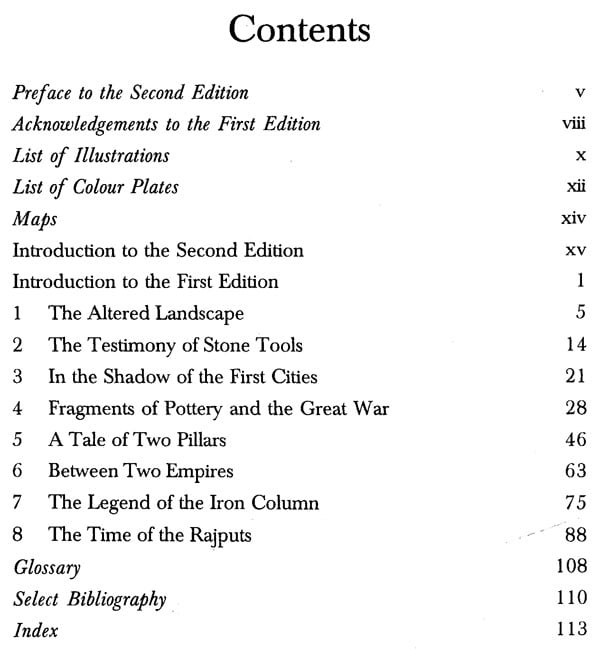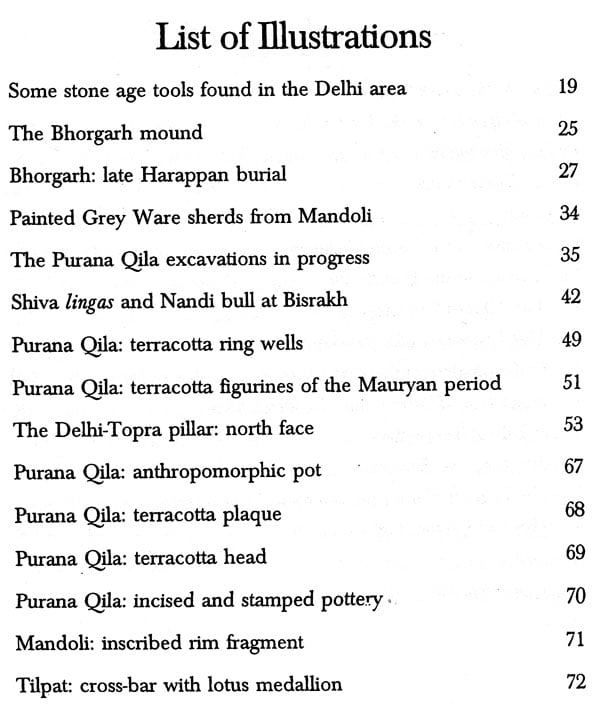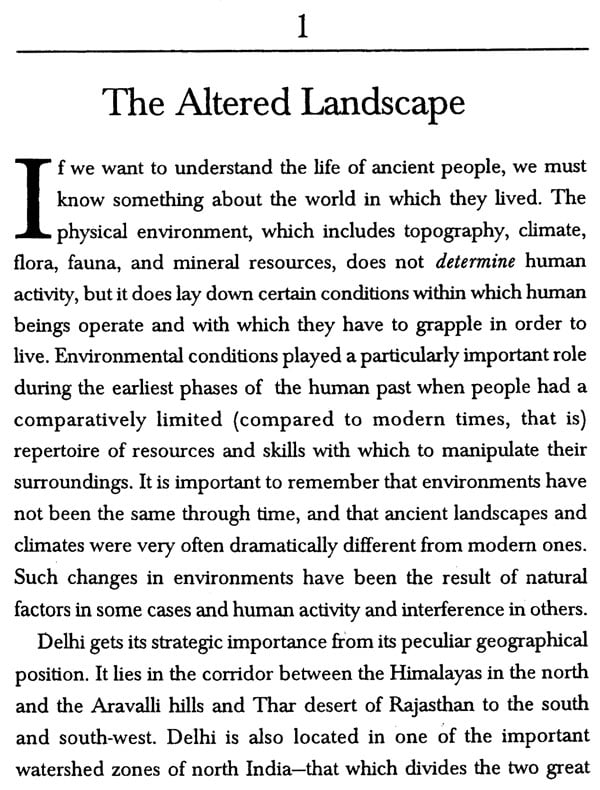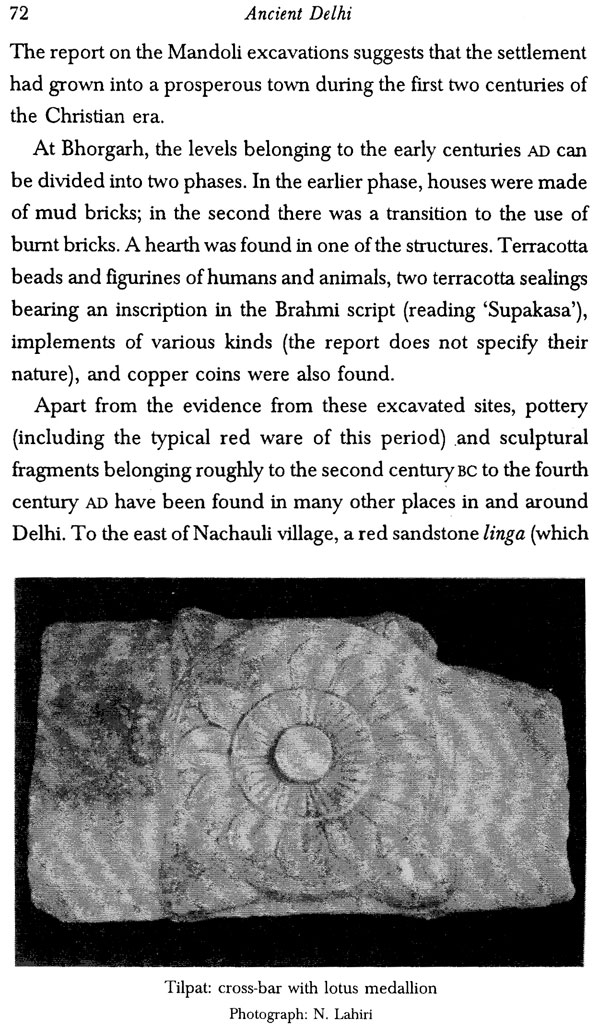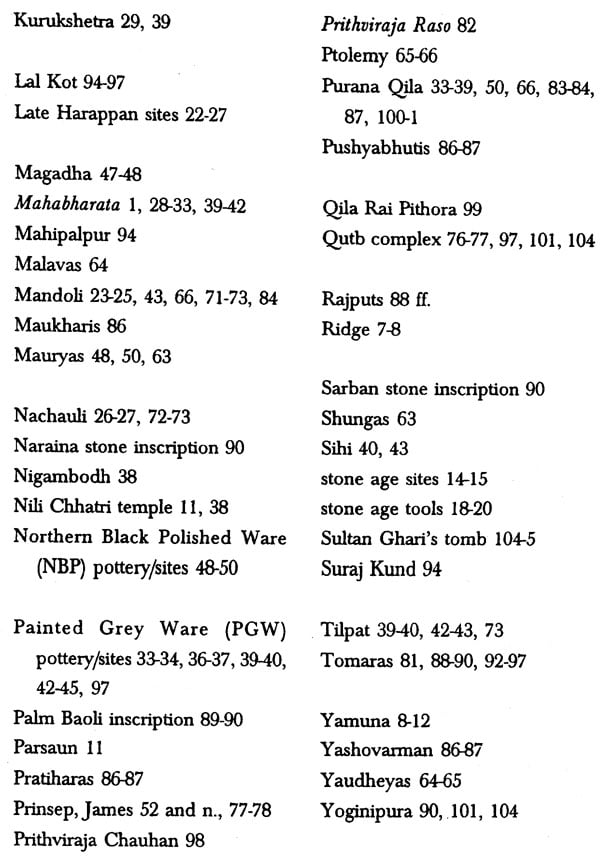
Ancient Delhi Second Edition
Book Specification
| Item Code: | NAQ979 |
| Author: | Upinder Singh |
| Publisher: | Oxford University Press, New Delhi |
| Language: | English |
| Edition: | 2006 |
| ISBN: | 9780195684056 |
| Pages: | 150 (22 B/W Illustrations) |
| Cover: | PAPERBACK |
| Other Details | 8.50 X 5.50 inch |
| Weight | 170 gm |
Book Description
Weaving together evidence from stone tools, ancient mounds, potter, monument, sculpture, literature, and local traditions, this book traces the history of Delhi from the Stone Age to the time of the Rajputs. With several maps and photographs illustrating the lively narrative, this is a must-read for Delhi aficionados as well as historians, archaeologists, and development watchers.
Upinder Singh is Professor, Department of History, University of Delhi.
About eight years ago, while I was teaching in St. Stephen's College, my former teacher Muhammad Amin asked me if I would write a book on Delhi's ancient history. It was Laht Sharma's idea. Lalit was Chairman and Managing Director of the Delhi Tourism and Transport Development Corporation in 1996-7. Holding the radical view that the Delhi government should aim at something more cerebral than setting up musical fountains (which were then the rage), he decided to commission a series of monographs on various aspects of Delhi's history and culture. The monographs would be scholarly yet lively and interesting, aimed at general readers, not academics.
My first reaction was to refuse. I was at that time submerged in the routines of home (my sons were small and a handful) and work. Also, ancient Delhi did not fall within the purview of my research interests. I was not sure whether I wanted to write a book for the Delhi Tourism and Transport Development Corporation. It did not sound particularly prestigious, although I was assured that various high-flying publishing houses would be approached to publish the series. Gradually my hesitation melted and I decided that it was worth a shot.
When I started looking for material on the ancient history of Delhi, I realized that there was really very little primary source material or secondary literature in the form of books or articles on the subject. The available histories of Delhi spoke about medieval and modem times and had practically nothing to say about the ancient period. This made my task simultaneously easy as well as difficult. It was easy, because I did not have to spend months or years researching the subject-there simply wasn't that much material to go through. But given this fact, how was Ito construct a meaningful and connected narrative? I decided to collect every single piece of evidence I could lay my hands on-from texts, inscriptions, archaeological data, documented local traditions etc. I then framed my data within a larger narrative of the history of the Indian subcontinent.
One of the things I realized at an early stage was that I could use some of the information and insights I had gained while doing an archaeological field suryey in 1994-5 in Ballabgarh along with Nayanjot Lahiri and Tarika Uberoi. This village-to-village survey proved to be an important part of my intellectual development as a historian, because it brought me face to face both with the tangible past and the past as it lingers in the lives and memories of present-day communities.
The most difficult part about writing the book was the stylistic requirement. I had to very self-consciously shake myself loose from the conventions of academic wilting. Concepts and technical terms had to be explained in a simple and straightforward manner. Footnotes were to be kept to a minimum. This was a real learning experience. Since then, I have become more and more convinced that it is possible, in fact necessary, to combine scholarship with readability and that one of the measures of good history writing is that anybody should be able to read, comprehend, and enjoy it.
The clues to Delhi's ancient past survive in the form of a few explored or excavated sites, stray artefacts, legends, and local traditions.' Seemingly nondescript villages lie on top of ancient mounds, where broken pieces of ancient pottery can be seen on the surface or studded in exposed sections. Old and broken sculptures are sometimes assembled and worshipped in village shrines. Ancient re-mains can also sometimes be seen at popular picnic spots (the reservoir at Suraj Kund), in the midst of agricultural fields (the Shiva linga in Nachauli village), in people's courtyards (the Tilpat cross-bar), in remote shrines (the Gothra-Mohabbatabad Shiva linga) and as prized possessions of villagers (the Vishnu sculpture at Chirsi).
The meagre and scattered evidence may be a reason why the earliest history of this area has generated less interest than its medieval and modern past. Delhi has a rather dismal representation in ancient texts, except for its possible connection with Indraprastha of the Mahabharata legend. As for archaeological evidence, the large monumental structures associated with medieval and modern elites-palaces, mosques, and imperial edifices of the colonial era-have overshadowed the ancient stone tools, terracotta, and broken pieces of pottery, relics of the everyday lives of ordinary people. The comparative lack of interest in Delhi's ancient past may perhaps be the result of a greater interest in things that are closer to contemporary experience and memory. While these factors may be responsible for the lack of popular enthusiasm, for historians, they simply translate into a greater challenge. This includes intensifying the search for new evidence. It also involves creating and furthering a sensitivity towards the extraordinary nature of apparently ordinary artefacts, animating them by connecting them with the people who made and used them and with their times.
The Contributions of Nineteenth Century Archaeologists and Scholars Discoverers are as important as discoveries. Among the early attempt to document the ancient and medieval remains in the Delhi are, the contribution of certain men has to be highlighted. One of them is Syed Ahmed Khan. Best known as a socioreligious reformer of nineteenth century India, he is significant for as as the author of a monumental Urdu work Asar-al-Sanadid (The Legacy of Heroes). The book, illustrated with sketches made by Mirza Shah Rulch Beg, was published in 1846 and a second revised edition appeared in 1854. It opened with a Persian couplet, 'The ruins of old buildings faithfully tell the story of the kings of bygone ages.' The book was the first de-tailed account of the monument of Delhi, based on a careful analysis of a variety of literary sources as well as the author's own personal observations.
**Contents and Sample Pages**
